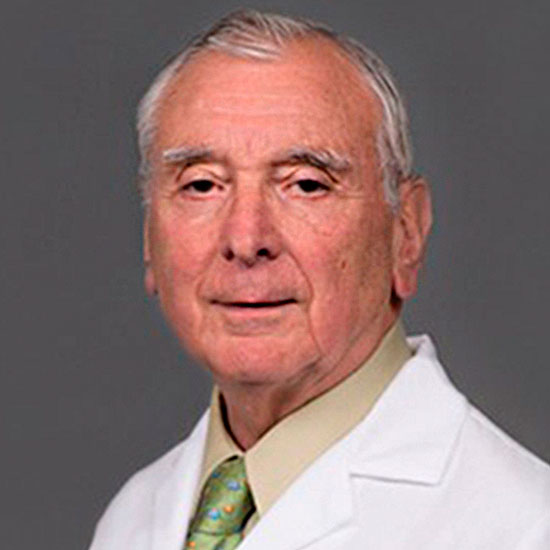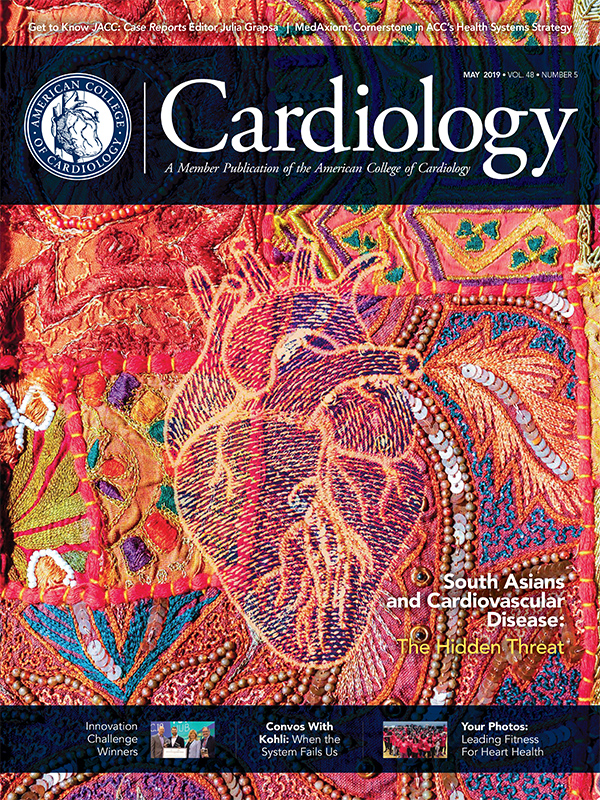Editor's Corner | Ven(o)us on a Half-Shell: From Botticelli to Today

For many years, we looked on venous disease as a condition that was associated with chronic venous insufficiency and chronic edema of the lower extremities that left many patients with unsightly swelling and discoloration of the lower extremities.
But there was not much concern for serious long-term risk to health. Chronic venous disease was a disorder cared for by the internist or primary care physician. The usual approach to therapy was compression stockings, anticoagulation for some patients and observation.
Some of the lack of interest in venous disease came from the lack of therapies that could treat acute venous obstruction before it caused chronic damage to the venous system, leading to chronic venous insufficiency, Thus, there was really no treatment to prevent the progression from acute venous obstruction to deep venous thrombosis (DVT) and ultimately pulmonary embolic disease.
Now we know that what has been thought to be an annoying but benign disorder – venous disease – is in reality a major cause of death. The end-result of venous disease is the potential for pulmonary embolism – either small and recurrent leading to pulmonary hypertension and right heart failure, or large and deadly.
We now have a number of options to treat pulmonary embolism. These range from intravenous heparin to systemic thrombolysis to urgent thrombectomy for massive life-threatening pulmonary embolism. Because of these new therapies, the treatment approach has been expanded for both acute and chronic venous disease. These new approaches have led some cardiologists to focus their activity on more aggressive medical as well as newer interventional venous therapies.
A new and important concern in patients with proximal DVT is the post-thrombotic syndrome with secondary severe chronic venous insufficiency. Recent studies have demonstrated mixed results in patients who develop this syndrome, with some patients showing improvement with a combination of thrombolytic therapy, mechanical thrombectomy or stenting.
After 24 months, there was a significant reduction in the number of patients who developed the post-thrombotic syndrome among the patients with moderate to severe DVT who received pharmaco-mechanical thrombolysis, compared with those who received heparin only.
While quality of life is improved with catheter-based treatment, bleeding complications remain significant. Data from the Nationwide Inpatient Sample indicate that about 4.5 percent of patients undergo catheter-directed thrombolysis and about a third received a vena caval filter.
Interestingly, there has never been a randomized trial studying safety and efficacy of vena caval filters. While vena caval filters are still being deployed, recent data suggest that many of the filters are not needed and reports continue to describe long-term complications from their use.
For patients with clinical evidence of acute pulmonary embolic disease, risk stratification is the first order of business. Patients need to be classified as non-high risk or high risk. For the former, direct oral anticoagulants (DOACs) are first-line therapy.1 Because DOACs have a lower risk of major bleeding, treatment with DOACs results in a better risk-benefit ratio than therapy with vitamin K antagonists.
Prompt therapy for this disabling condition can improve right and left heart hemodynamics, reverse pulmonary hypertension and significantly improve the patient's quality of life. For patients who are severely disabled because of pulmonary hypertension and right heat failure, this therapy is an important option to prevent progression to irreversible severe pulmonary hypertension and right heart failure.
Several recent clinical trials support the use of DOACs for acute therapy of uncomplicated venous thromboembolism (VTE), as well as for long-term maintenance therapy after an episode of DVT. More guidance for antithrombotic therapy in VTE can be found in the CHEST Guideline and Expert Panel Report.2
While use of compression stockings in patients with documented DVT does not appear to prevent the post-thrombotic syndrome, use of aspirin and compression stockings remains a standard of care for prevention of DVT. High-risk patients with acute pulmonary embolism who present in shock or severe right heart failure with hemodynamic compromise need immediate treatment with systematic thrombolysis.
Surgical pulmonary thrombectomy or transcatheter direct thrombolysis should be considered when systemic thrombolysis is contraindicated because of high bleeding risk.
A comprehensive approach to therapy of pulmonary embolism can be found in the Journal of the American College of Cardiology.3
A variety of new noninvasive methods have been added to the diagnostic armamentarium of venous disease measurements. Some follow traditional measurement lines focusing on venous pressure measurements. Several newer methods use plethysmography and tomographic imaging, which improves the sensitivity of the measures.
For the cardiologist who wants to specialize in venous disease, detailed training in newer methods for diagnosing and quantitating the status of DVT require advanced training in some of these newer techniques, as well as skills in both invasive and noninvasive venography and interventional therapy of venous disease.
Like many other areas in cardiology, a team-based approach to diagnosis, therapy and long-term care for patients with acute and chronic venous disease offers the best strategy to optimize care for these patients.
References
- Tromeur C, Van Der Pol LM, Couturaud F, et al. Expert Rev Respir Med 2017;11:641-8.
- Kearon C, Akl EA, Ornelas J, et al. Chest 2016;149:315-52.
- Konstantinides SV, Barco S, Lankeit M, Meuer G. J Am Coll Cardiol 2016;67:976-90.
Keywords: ACC Publications, Cardiology Magazine, Vena Cava Filters, Phlebography, Fibrinolytic Agents, Mechanical Thrombolysis, Heparin, Venous Thromboembolism, Stockings, Compression, Physicians, Primary Care, Long-Term Care, Inpatients, Aspirin, Hot Temperature, Postthrombotic Syndrome, Standard of Care, Cause of Death, Quality of Life, Pulmonary Embolism, Venous Thrombosis, Postphlebitic Syndrome, Hypertension, Pulmonary, Hypertension, Pulmonary, Thrombolytic Therapy, Anticoagulants, Edema, Lower Extremity, Plethysmography, Venous Pressure, Hemodynamics, Heart Failure, Vitamin K
< Back to Listings



